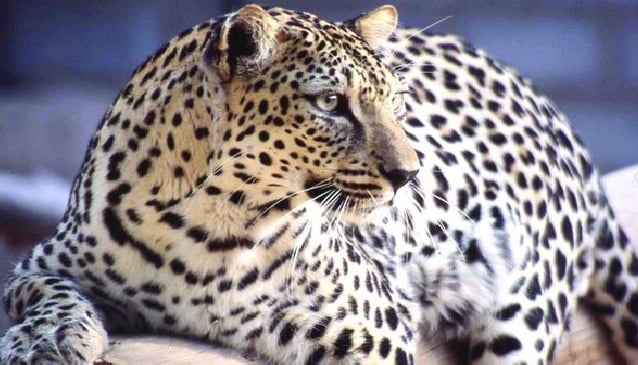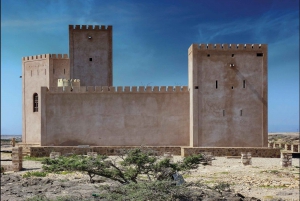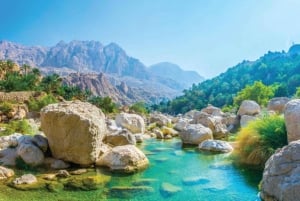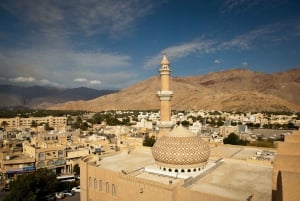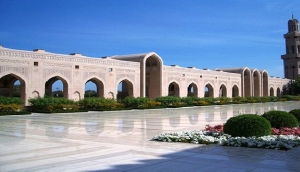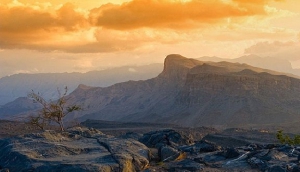The Arabian Leopard in Oman
The Omani government took positive action back in 1997 to set up the Arabian Leopard Project.
Book Top Experiences and Tours in Oman:
If youʻre booking your trip to Oman last minute, we have you covered. Below are some of the top tours and experiences!- Muscat: Full-Day Nizwa Tour with Audio Guiding
- Muscat: Big Bus Hop-On Hop-Off Sightseeing Tour
- From Muscat: Wadi Shab & Bimmah Sinkhole Full-Day Tour
- Muscat Half-Day City Tour with Audio Guiding
- Muscat: Wadi Shab and Bimah Sinkhole Tour with Audio Guide
One of the most strikingly beautiful creatures on Earth resides in the Sultanate of , and while we'd like to say it is one of the top attractions in Oman, it is actually unlikely you are unlikely to ever come across it in the wild. The elusive Arabian Leopard (Panthera pardus nimr) is related to, but much smaller than, the African Leopard, with a slender, golden body covered with dark rosettes, and cool amber eyes to match.
Until recent years the nimr leopard existed in countries throughout the Arabian Peninsula, including Yemen, Saudi Arabia and the UAE, but the greatest density of the leopard population now resides in the limestone mountains of the Dhofar region of Oman, and in exceptionally smaller numbers in the Musandam region. This demonstrates the major responsibility that Oman has to ensure the protection of these beautiful wild cats.
Their habitat of choice is high in the country’s arid mountains, where they are secluded from danger and, until recently, from human beings. Here, they feast on smaller animals such as the mountain gazelle, the rock hyrax and the Arabian tahr, but their ecosystem is becoming increasingly threatened by the intervention of humans, who are turning the rough dirt tracks into regular roads, which will only lead to more development in the future.
The leopard cubs are particularly vulnerable; born both deaf and blind, they only gain a full spectrum of senses at around two weeks of age. They depend on a devoted mother moving them carefully from place to place in order not to be discovered by stalking predators like wolves and foxes.


These beautiful creatures were once thought of as problematic, but in reality we humans are the problem. The threats facing the adult leopards are more likely to be loss of habitat and poaching by wildlife collectors than being preyed upon by other animals in the food chain. Shepherds have been known to hunt and kill leopards in retaliation for killing their livestock, while others hunt the very same animals the leopards need to eat.
The decrease in numbers also has the effect of reducing the gene pool, making extinction a real possibility in the near future. Conservation laws in Oman now fine and imprison those found shooting a leopard. The actual population worldwide is hard to establish but dwindling numbers are currently estimated at fewer than 200 animals, earning the species the sorrowful status of ‘critically endangered’ by the International Union for the Conservation of Nature (IUCN).
The Omani government took positive action back in 1997 to set up the Arabian Leopard Project and to classify Jebel Samhan as a Nature Reserve, covering an area of 4500km2 in the Dhofar Region. The wooded highlands and water-filled canyons create an ideal habitat for leopards and other animals, such as hyenas, caracal, wolves and foxes, along with their prey. The area is also favoured by many species of bird and varieties of turtle. Significantly, there is, at present, no human settlement on the misty peaks of Jebel Samhan; instead the area is used for grazing livestock and by frankincense gatherers.
How can one catch sight of a leopard in the wild? With difficulty. Leopard trackers have scant experience to draw upon as this elusive animal continues to exist on the periphery of their searches, leaving teasing trails of footprints and scat in the foggy, stony terrain. Camera traps are set up in prime locations to try to capture a portrait of the mysterious mammals, but the astute creatures seem to sense their presence, and avoid them accordingly.




There exists a company called Biosphere Expeditions, which organises volunteer trips to carry out field research alongside government scientists, on a number of wild species, including the Arabian Leopard. Moreover, breeding programs have been set up in Oman and neighboring countries in an effort to expand the leopard population, and it is hoped that through education and the dedication of the local people, the most ethereal of wild cats can be brought back from the brink of extinction.



